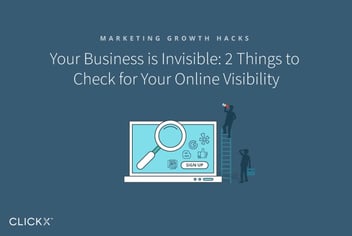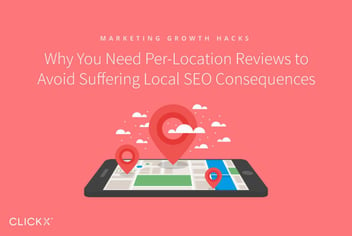3 Ways to Build Trust and Boost Rankings for Your Business Website
When it comes to your business website, building sufficient trust is key. Not only does it dispel visitors’ apprehensions, but it can also make a big difference to your search engine rankings. Doesn’t this seem unfair when trust is such a vague concept?
Thankfully, building trust is relatively straightforward and doesn’t necessarily have to be a focal point of your actions. By focusing on conveying who you are as a brand and incorporating some tried and true marketing techniques into your strategy, you can prove yourself to visitors and search engines alike.
In this article, we’ll review three ways you can build trust for your own business website. Let’s get started!
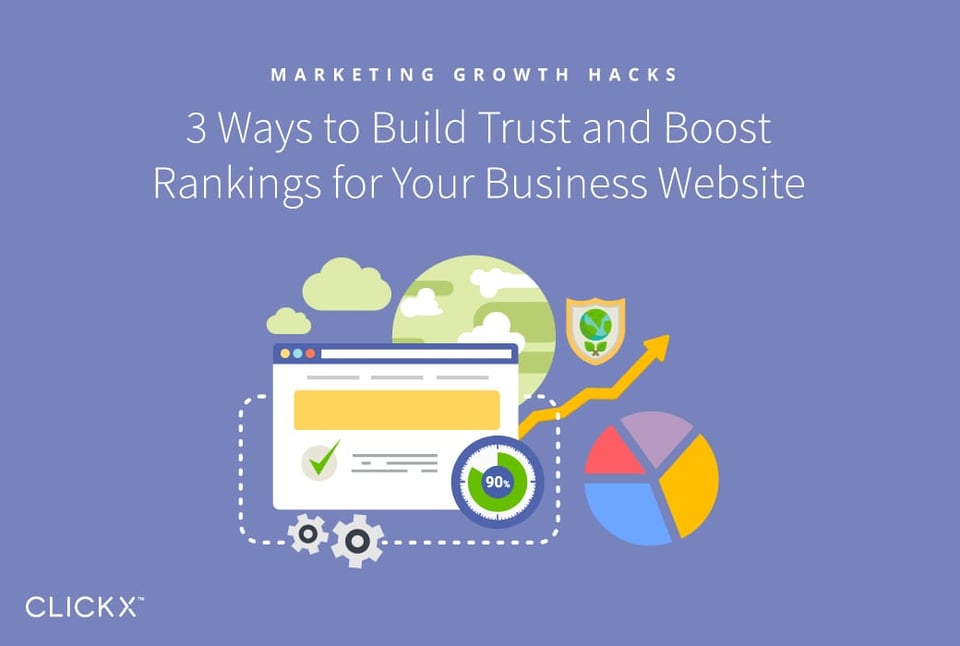
Key Takeaways
- Customer testimonials show that you have a proven history with happy clients.
- High-profile contracts are a way to highlight that you have the industry’s trust.
- Certifications and trust marks prove that a third party has verified your ability to do your job.
1. Showcase Customer Testimonials
Proving your history with happy clients can go a long way in creating trust. A simple way to do this is to feature testimonials on your site. For example, this dedicated page showcases past client testimonials and offers a quick and easy option for visitors to leave their own:
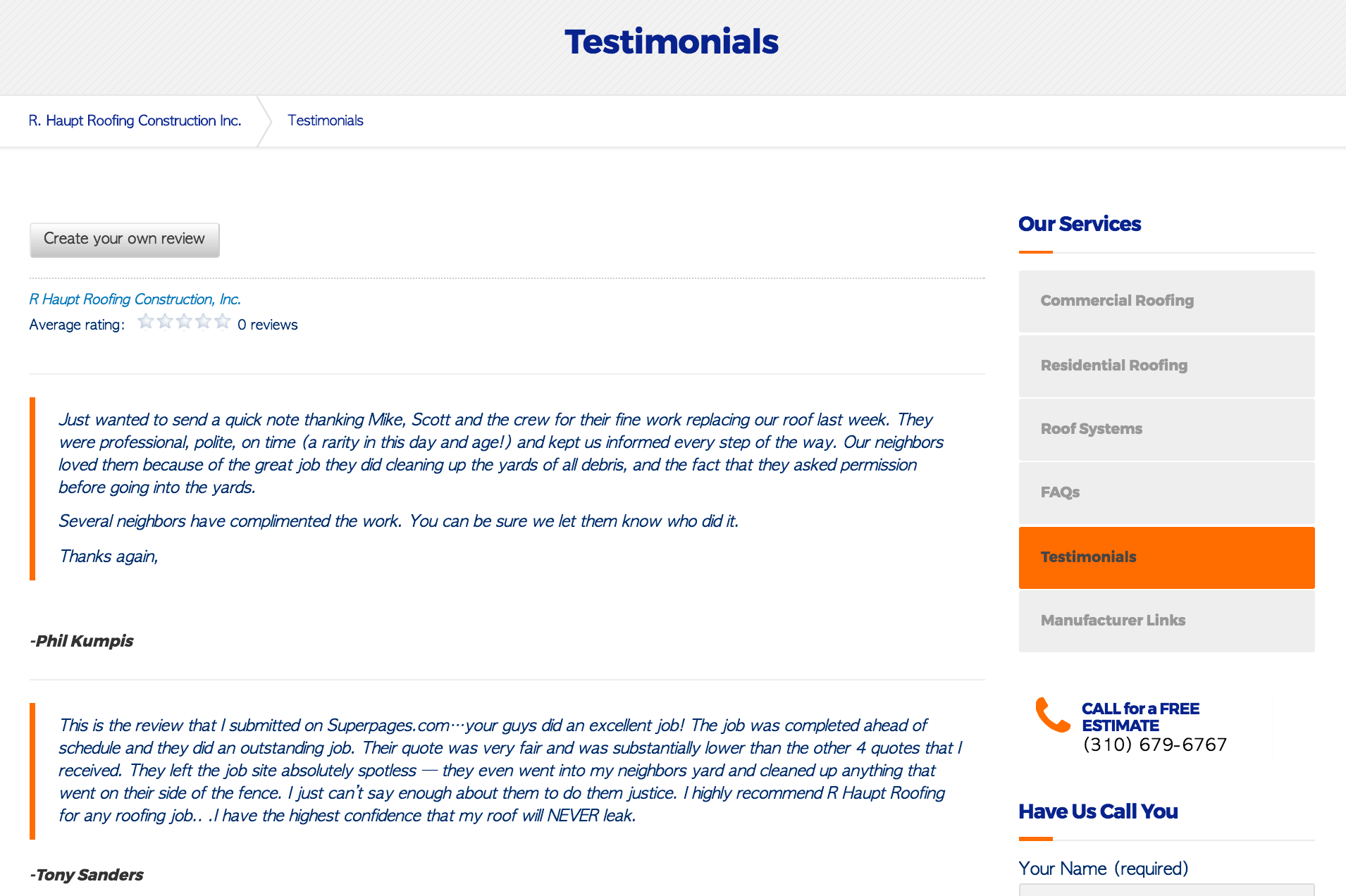
Testimonials build trust for a few reasons, authenticity perhaps being the most important. Real testimonials in the client’s own words offer credible social proof. This helps ease the anxiety of potential customers. Whether they’re worried about quality, price, or service, positive testimonials will show them that others were satisfied.
[Tweet “Testimonials go a long way in proving your history with happy clients.”]
You should look to feature testimonials on your website in a way that best fits your business’ branding. There are seemingly countless design options, including highlighting individual quotes, adding customer photos, and even showcasing video reviews. If you have enough testimonials already on hand, you can even create a dedicated page like the one in the example above. We recommend poking around other business sites for inspiration before settling on the design you like best.
Of course, you should also set up a simple way for people to send you new reviews. This can present an issue, especially if you have multiple locations. Fortunately, if you’re using the Clickx App, collecting per-location reviews is painless.
Remember, if you’re showcasing a testimonial provided by a reputable business, be sure to add their link. You could also request that they feature you as a partner on their site, earning a quality backlink to yours (more on this in the next section).
2. Highlight High-Profile Customers and Partners
If you’ve earned business with well-trusted brand names, it’s not bragging to let people know. In fact, it simply takes the idea of testimonials to the next level. You worked hard to earn those contracts, so why not let them work for you?
For example, SoundVision takes this opportunity to refer business to trusted partners, including logos and contact information:

Highlighting high-profile partners works to build trust by reducing the perceived risk of working with you—if such a big industry name trusts you, so should everybody else!
[Tweet “Showing your big-name affiliations reduces the perceived risk of working with you.”]
You can feature partners on your homepage or build a dedicated partners page and be as creative as you like. However, there’s no need to get complicated or write a book about each brand relationship. It can be as simple as creating an image gallery including the logos of each partner. Get permission to share the official logos of each company and feature them on your site. If you’re a WordPress user, the gallery feature makes this process a cinch.
Remember, this can be a reciprocal process. For genuine business relationships, there’s no harm in asking other companies to feature your brand. You can gain more exposure plus earn a quality backlink to your site.
3. Display Certifications and Other Trust Marks
Having authority and expertise in your field is yet another mark of trust. Showing off certifications, accreditations, and industry group memberships helps to prove you’re experienced and accomplished. This firm features credentials front and center on the homepage of its website:
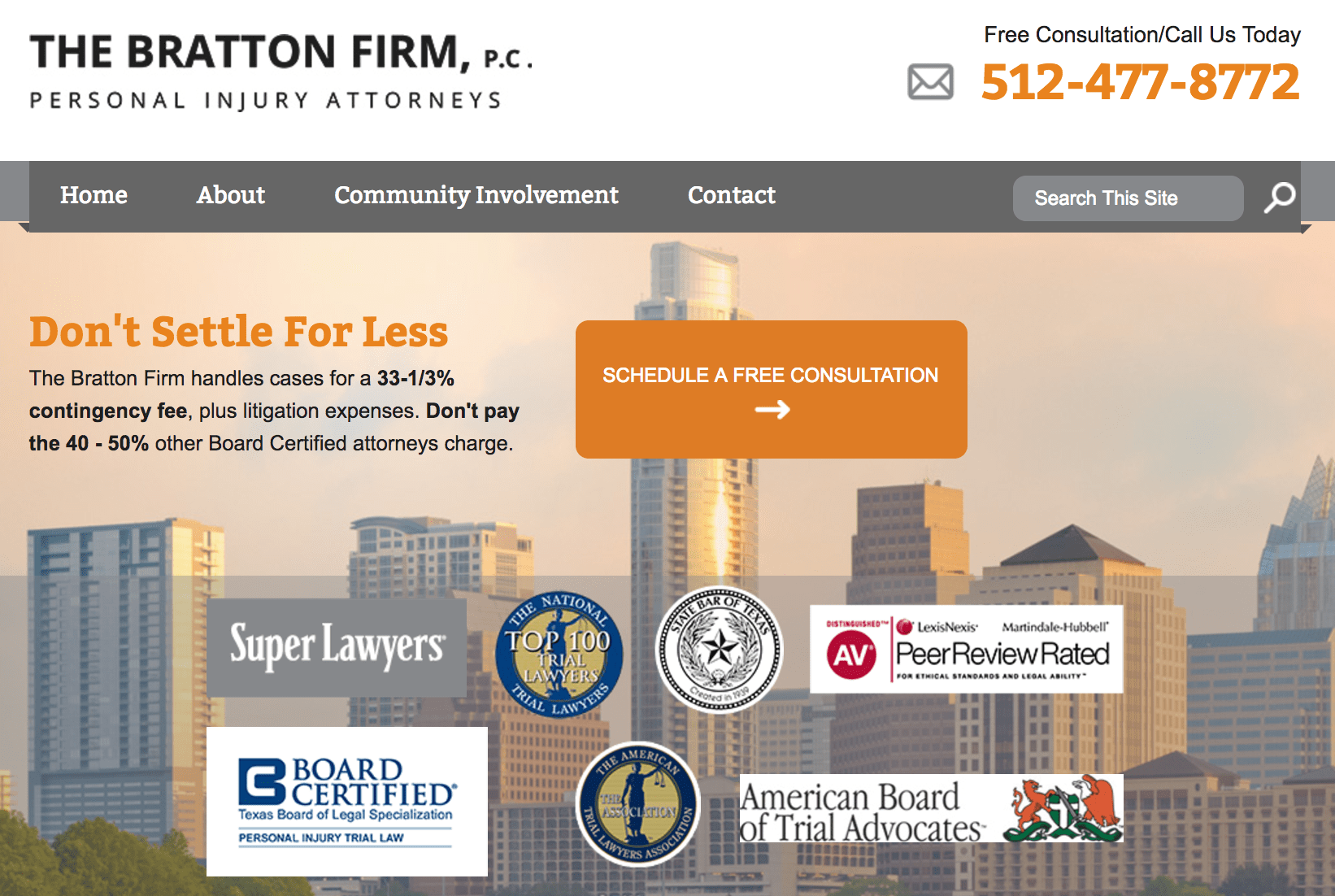
These types of credentials are important because they are given out by an unbiased third party and carry more weight than your word alone. Also, including quality external links in your content is good for SEO.
[Tweet “It builds trust when a third party certifies your expertise.”]
If you don’t have any public credentials, you may consider researching what it takes to earn a few. Some are industry agnostic, such as BBB accreditation. However, you may do well to find specialized certificates for your industry.
Once you have these, it’s a matter of showing them off! This is particularly consequential if you work in a highly sensitive industry, like law. The personal injury attorneys in the example above know how important trust is, which is why their certifications are on full display for everyone to see.
If you have just a few credentials to display, you can drop them into the header or footer of your site. That way your trust marks are visible everywhere. Otherwise, you could put the most important credentials in the footer, and create a dedicated section for the full list on your About page.
Bonus: Link to Third-Party Review Sites
As mentioned, as far as Google views things, linking to trustworthy external sites is a good idea. You can double-down on this by linking to your business’ third-party review profiles as this company does:
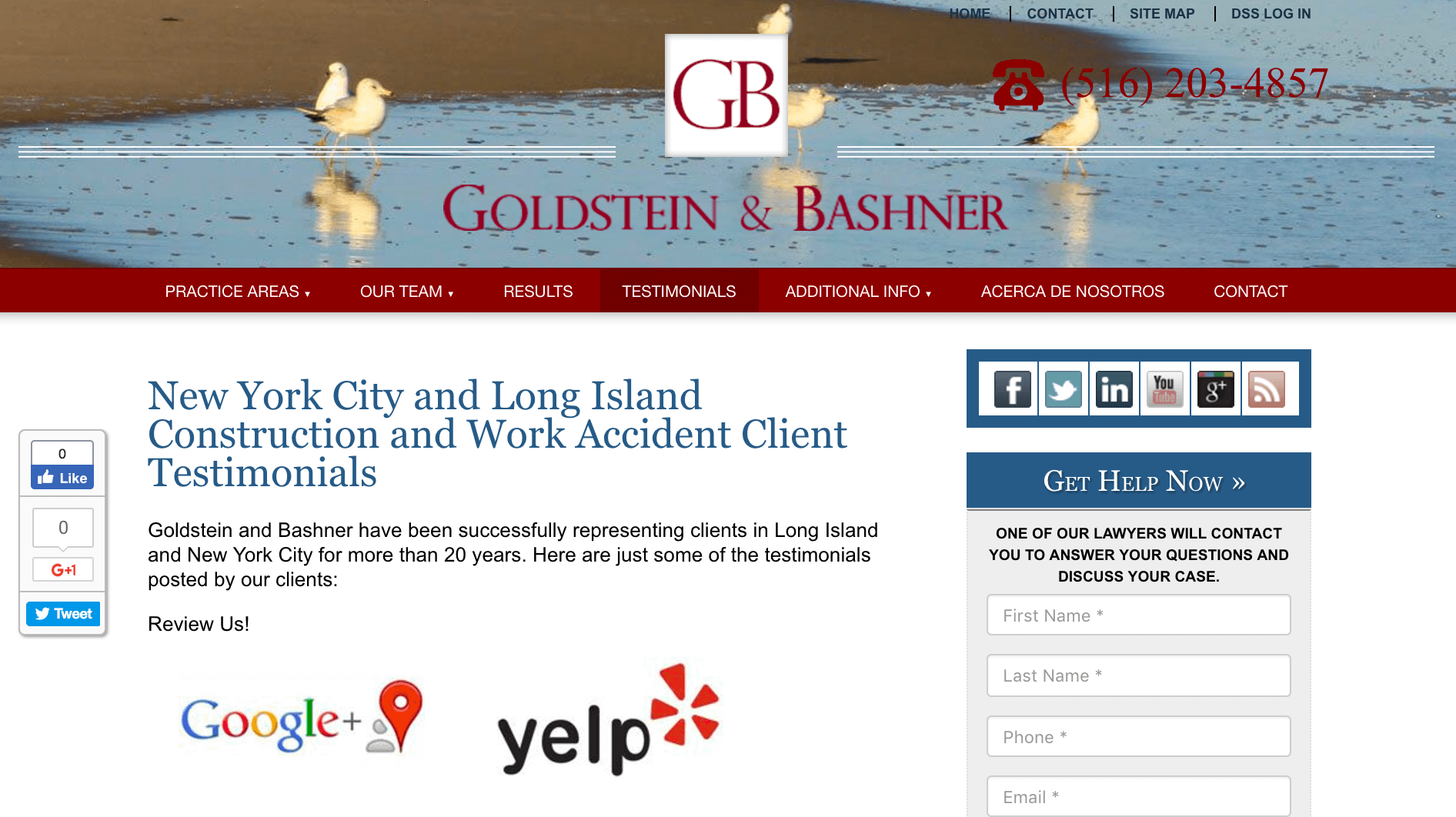
This is helpful for a couple of reasons. First of all, it shows that other websites and organizations are aware your company exists. In other words, you’re less likely to be some kind of business front. Secondly, it builds trust by featuring even more customer reviews.
You can include your third-party review links wherever makes sense to do so. In our example, you can that one way to do this is to include logos and links on your testimonials page.
Before adding such links to your site, first ensure your business is present on the relevant third-party review sites. Then, all that’s left is to add a link to your profiles! Make sure they are easy to find and understand.
If you want to go the extra mile, some review services, like Yelp, enable you to embed reviews directly into your website. Also, don’t forget to encourage customers to leave reviews in the first place, as positive reviews can only help your rankings.
Conclusion
As you can see, trust factors lean heavily on proving that others interact with you willingly and happily. By taking the time to shine a spotlight on your credibility, you build trust not only with search engines but also with potential customers viewing your site.
To review, here are the basic steps to get started:
- Showcase customer testimonials.
- Highlight high-profile customers and partners.
- Display certifications and other trust marks.
- Link out to third-party review sites.
What questions do you have about building more trust for your business website? Let us know in the comments section below!

